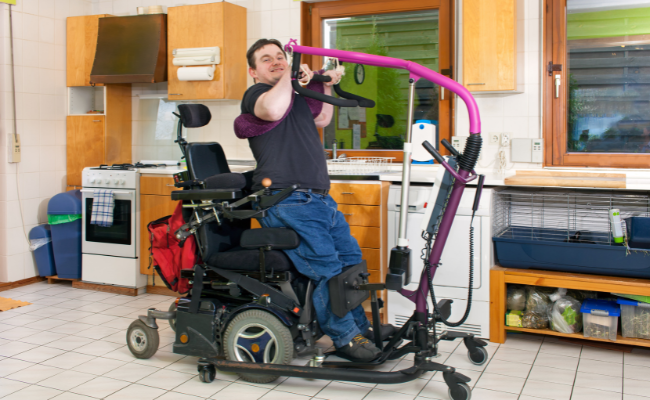How to Treat Hereditary Spastic Paraplegia?
- November 03, 2023
- No Comments

What is Hereditary Spastic Paraplegia (HSP)?
Hereditary Spastic Paraplegia (HSP) is a rare group of inherited neurological disorders characterized by progressive stiffness and weakness in the muscles of the lower limbs. This condition primarily affects the legs, leading to difficulties in walking, maintaining balance, and performing routine activities. The hallmark feature of HSP is spasticity, a condition where muscles become stiff and difficult to control due to ongoing contraction. Encompassing a cluster of uncommon inherited disorders, HSP signifies the onset of weakness and stiffness in the leg muscles, gradually progressing over time. These symptoms are recognized under the aliases of familial spastic paraparesis or Strümpell-Lorrain syndrome.
Why Does Hereditary Spastic Paraplegia Occur?
HSP is fundamentally a genetic disorder, meaning it is inherited from one or both parents. The genetic mutations associated with HSP typically impact the nerve cells responsible for controlling voluntary muscle movement, especially those involved in the communication between the brain and the muscles of the legs. The specific genetic mutations causing HSP can vary, resulting in different forms or subtypes of the disorder.
How is Hereditary Spastic Paraplegia Diagnosed?
Diagnosing HSP involves a comprehensive process to identify specific genetic mutations and assess the severity of symptoms.
- Clinical Evaluation: A thorough clinical evaluation is conducted, taking into account the patient's medical history, presenting symptoms, and any family history of neurological disorders. This initial assessment helps guide further diagnostic steps.
- Genetic Testing: Genetic testing is a crucial diagnostic tool for HSP. It involves identifying specific genetic mutations associated with the disorder, confirming the presence of HSP, and determining the specific subtype. Genetic testing can provide valuable insights into the nature of the condition.
- Neurological Examinations: Neurological examinations play a vital role in diagnosing and monitoring the progression of HSP. These examinations include assessments of muscle tone, reflexes, coordination, and other factors that help characterize the extent of neurological involvement.
- Imaging Studies: Magnetic Resonance Imaging (MRI) or other imaging studies may be conducted to rule out other potential causes of spastic paraplegia. These imaging studies can help identify any structural abnormalities or lesions that may be contributing to the symptoms.
Treatment Solutions for Hereditary Spastic Paraplegia
Managing HSP involves a multifaceted approach aimed at addressing symptoms, enhancing mobility, and improving overall well-being.
- Physical Therapy: Physical therapy is a cornerstone of HSP management. Therapists work closely with individuals to design exercise regimens that target muscle strength, flexibility, and coordination. These exercises help alleviate spasticity and improve overall mobility.
- Medications: Medications, such as muscle relaxants and anti-spasticity drugs, may be prescribed to manage specific symptoms associated with HSP, including muscle stiffness and spasms.
- Orthotic Devices: Ankle-foot orthoses (AFOs) and other orthotic devices may be recommended to provide additional support and improve walking ability. These devices assist in maintaining proper foot alignment and preventing muscle contractures.
- Mobility Aids: Canes, walkers, or wheelchairs may be utilized based on the severity of symptoms. These aids help individuals with HSP maintain their mobility and independence.
- Intrathecal Baclofen Therapy: For severe spasticity, intrathecal baclofen therapy may be considered. This involves delivering a muscle relaxant directly into the spinal fluid using a pump, effectively managing muscle stiffness.
- Surgical Interventions: In specific cases, surgical procedures may be recommended to address issues associated with HSP. Tendon release surgeries, for example, can improve joint flexibility and enhance overall mobility.
Benefit Points of Treating Hereditary Spastic Paraplegia
- Improved Quality of Life: Treatment endeavors to enhance the overall quality of life for individuals with HSP by addressing symptoms and improving mobility. By mitigating spasticity, individuals can experience greater comfort in their daily lives.
- Functional Independence: Physical therapy and assistive devices play a pivotal role in promoting functional independence. These interventions enable individuals to perform daily activities with greater ease and autonomy.
- Pain Management: Medications and therapeutic interventions contribute to managing pain associated with muscle stiffness and spasms, improving the overall comfort of individuals with HSP.
- Prevention of Complications: Timely and comprehensive treatment can help prevent complications associated with HSP, such as joint contractures and postural abnormalities. Early intervention is crucial for optimizing outcomes and minimizing potential complications.
- Individualized Care: Treatment plans are customized to the specific needs and symptoms of each individual with HSP. This personalized approach ensures that care is tailored to address the unique challenges and requirements associated with this rare genetic disorder.
- Ongoing Support: Individuals with HSP benefit from ongoing support from healthcare professionals, including neurologists, physical therapists, and other specialists. This continuous support helps address evolving needs and optimize treatment strategies over time.
Comments (0)